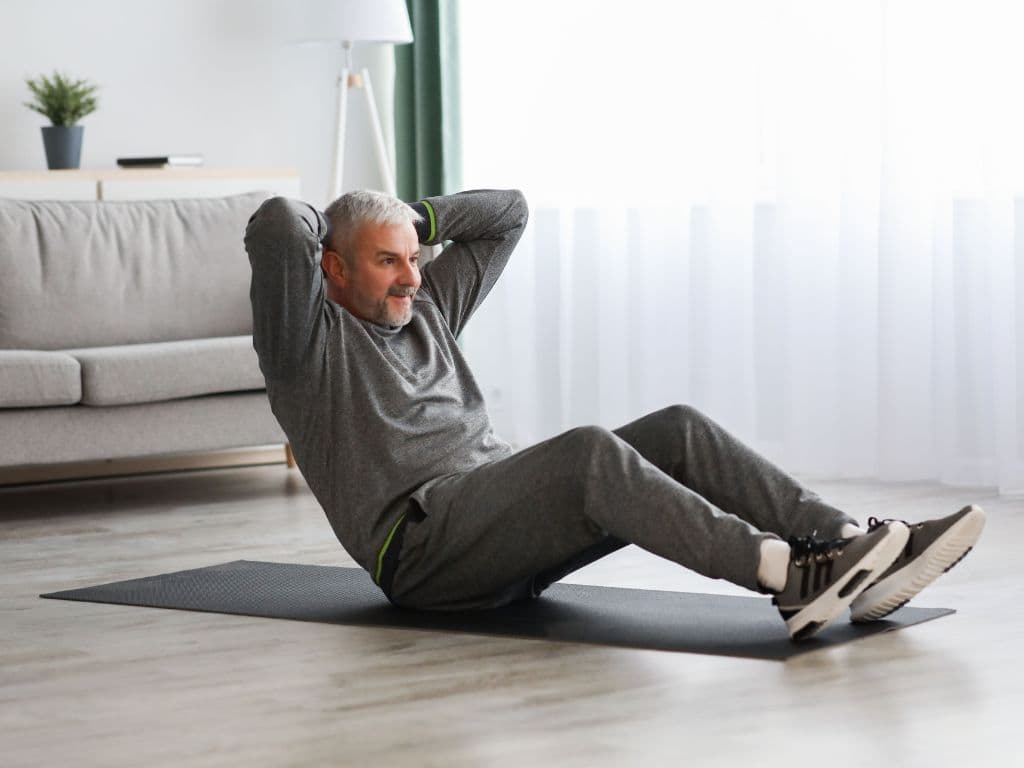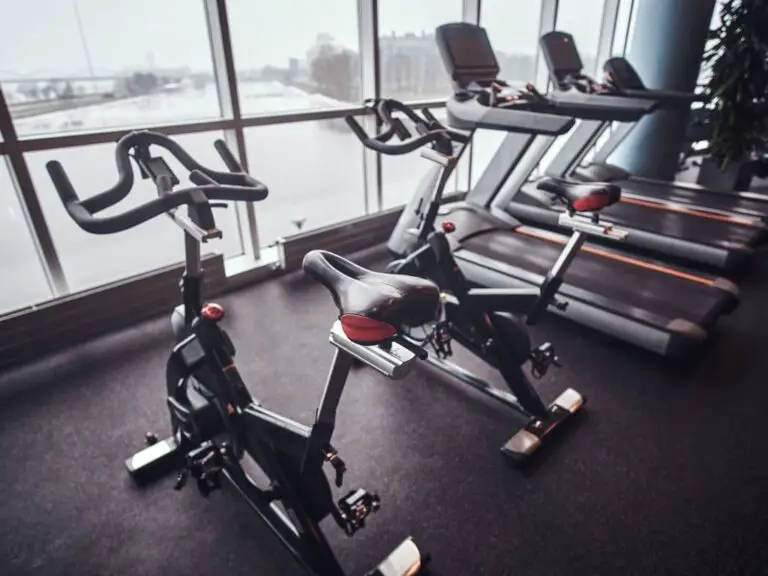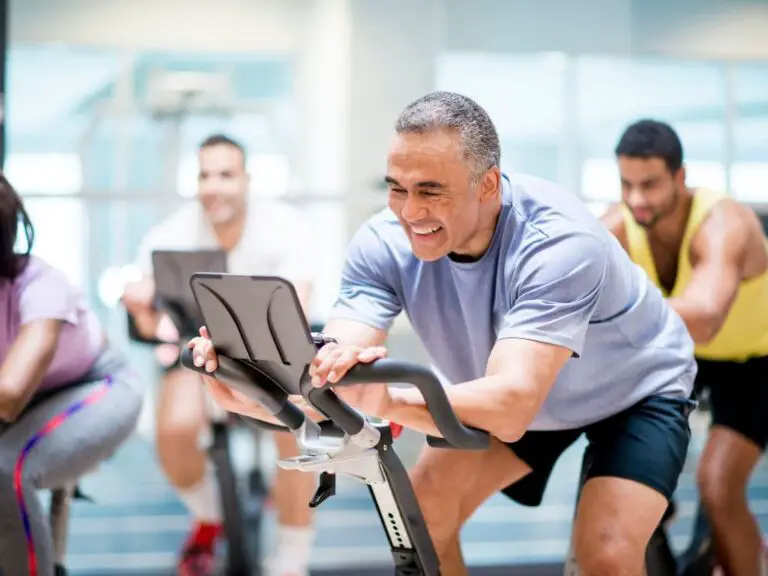What Does Sucking in Your Stomach Do?
Sucking in your stomach, also known as abdominal hollowing, is a technique that involves contracting your abdominal muscles and drawing your navel back towards your spine. This action helps to flatten and strengthen the abdominal area.
Hollowing has become a popular practice among those seeking to improve their posture and core strength. Additionally, some use it as a quick fix to reduce the appearance of a protruding stomach.
But what does sucking in your stomach do? Sucking in your stomach engages core muscles like the transverse abdominis and rectus abdominis, which can improve posture, temporarily reduce a protruding stomach’s appearance, and strengthen core stability. However, improper or excessive hollowing can lead to overuse injuries, poor breathing patterns, and increased pressure on the pelvic floor.
While hollowing can offer some benefits, it also carries risks if overdone or performed incorrectly. In this article, we’ll explore what sucking in your stomach does, its benefits and risks, who should avoid it, and how to do it properly.

Does Sucking in Your Stomach Help Improve Your Posture?
When you actively pull your navel inwards and up towards the spine, you are contracting the transverse abdominis – the deep core muscle that wraps around the torso. Engaging this muscle helps to stabilize the spine and pelvis, which is key for good posture.
Hollowing also activates the rectus abdominis, the long vertical muscle that makes up the “six-pack” abs. Contracting this muscle allows you to pull in your stomach. When done correctly, hollowing engages several layers of abdominal muscles to draw in the belly and support the lower back.
For many people, a protruding stomach is caused by a weak or relaxed transverse abdominis that allows the belly to push forward. By actively pulling the navel in and up, hollowing causes the abdominal contents to draw inward, reducing the outward protrusion.
Additionally, contracting the rectus abdominis tightens the muscle and gives the appearance of a flatter, more toned stomach. However, this effect is temporary and the stomach will return to its normal protrusion when the muscles are relaxed.
What are the benefits of sucking in your stomach?
- Strengthens the transverse abdominis, improving core stability.
- Engages the rectus abdominis and other abdominal muscles, toning the stomach area.
- Promotes better posture by stabilizing the spine and pelvis.
- Provides temporary cosmetic improvement in stomach appearance.
- May help retrain transverse abdominis if done regularly.
- Can complement core exercises like planks, sit-ups and crunches.
What are the risks of sucking in your stomach?
- Can lead to overuse injuries in the abdomen if done excessively.
- Promotes poor breathing patterns if held continuously. The diaphragmcannot fully descend.
- May result in a weaker transverse abdominis if relied on instead of full core training.
- Can increase pressure on the pelvic floor.
- Causes fatigue in abdominal muscles if held for too long.
- Perpetuates poor posture if used as a crutch rather than correcting the root issue.
How to Properly Suck in Your Stomach for Core Strength?
To start, stand with your feet about hip-width apart, with soft knees that are not locked. Imagine drawing your belly button back towards your spine, contracting your transverse abdominis to pull your navel inwards and up. This will engage the deep core muscles around your midsection. As you hollow in, be sure not to hold your breath. Take an inhale before sucking in, then exhale as you engage the core.
Continue to breathe deeply while holding the hollow position. Keep your chest lifted to avoid hunching forward, and maintain a neutral spine without excessive arching or flexion. You should feel a tightening sensation around your midsection as the abdominal muscles activate, with the lower abs pulling inward and up.
When first learning the technique, hold the hollow position for 5-10 seconds, then relax and repeat for a few sets. Focus on control and proper form rather than maximally sucking in your stomach. Only hollow in as much as you can while maintaining good alignment and breathing. Gradually increase your hold time as your core strengthens.
Make sure you are not straining or causing any pain as you hollow your stomach. You may feel a sense of deep muscle contraction, but it should not be an intense, forceful squeeze. If you experience any discomfort, ease off and check your form. Integrate this hollowed core brace during exercises like planks and crunches to engage your muscles throughout the movement.
For variation, practice sucking in your stomach while in different positions – sitting, on your hands and knees, standing, etc. This challenges your core to stabilize in a range of motions. With consistent practice, you will learn to automatically recruit the deeper transverse abdominis and obliques, strengthening your core from the inside out.
Which Specific Muscles are Engaged When Hollowing?
The main muscles engaged during hollowing are:
- Transverse abdominis – contracted to pull in navel and tighten core.
- Internal obliques – activated to assist transverse abdominis in drawing belly inward.
- Rectus abdominis – flexed to flatten front of stomach.
- Pelvic floor muscles – lift upward to help support internal organs.
- Multifidus – help stabilize spine during the movement.
- Diaphragm – domes upward when abdomen is hollowed.
The amount each individual muscle is targeted depends on technique, body position, and a person’s unique physique. Those with stronger cores will engage the deeper muscles more.
How Does Body Type and Fitness Level Affect the Muscles Engaged in Hollowing?
People who are new to core training or have higher body fat may only feel hollowing in their rectus abdominis, the surface muscle that controls abdominal flexion. As core strength improves, an individual will engage their transverse abdominis more to draw in from the sides and deep stomach.
Those with low body fat and strong core function will recruit their deeper core muscles like the transverse abdominis automatically when hollowing. Athletes may also use their obliques to assist the motion.
Women often have an easier time activating transverse abdominis as their core musculature better supports drawing inward. Men typically have stronger rectus abdominis and may default to just flexing this muscle.
How long should you suck in your stomach for?
When first learning abdominal hollowing, the duration you can hold the position will depend on your current fitness level and goals. For beginners, holding the hollow for 5-10 seconds is typically sufficient to feel engagement of the transverse abdominis and other core muscles. This can be repeated for a few sets as you are first developing the technique.
As your core strength improves, you can gradually increase the hold time to 15-30 seconds, focusing on maintaining proper control and stability throughout. Those with more advanced core function may work up to holding a sustained hollow for 30 seconds or longer while keeping good alignment and breathing patterns.
However, for the greatest core conditioning benefits, it is not necessary to hold the sucking in position for extended periods. Instead, integrate the hollow brace during functional movements like planks, crunches and other abdominal exercises. Actively contract the core at the beginning of each rep, and maintain the hollowed position as you perform the movement.
If your specific goal is to better activate your transverse abdominis, do shorter holds of 10 seconds while ensuring the deep abdominal contraction is present. For working the rectus abdominis and external obliques, longer plank holds with a hollowed core will provide a greater training effect.
It is important not to overdo the duration of abdominal hollowing, especially when first developing the skill. Fatigue, cramping and improper breathing technique can occur if holding too long. Build up your endurance gradually, and avoid sucking in forcefully. With regular practice, you will learn to recruit your stabilizing core automatically.
How Does Fitness Level and Goals Determine the Duration for Hollowing?
For most beginners, holding a hollow for 5-10 seconds is sufficient to feel engagement of the core muscles. This can be repeated for a few sets. Those with more core strength can hold a hollow for up to 30 seconds, focusing on control and stability.
When doing exercises like planks and crunches, try to maintain a hollow by keeping the navel drawn in throughout the movement. Focus on good form rather than duration.
If your goal is to strengthen transverse abdominis, do shorter holds of 10 seconds while ensuring the deep core is activated. For rectus abdominis, longer planks while holding a hollow will provide a greater training effect.
Should Hollowing be Done if it Causes Pain?
You should not suck in your stomach if it causes any pain in the abdomen, back or pelvic region. Sharp pains when hollowing may indicate an injury, muscle strain or pelvic floor dysfunction.
A dull ache from deep muscle contraction is normal at first. But excessive fatigue, cramping, or other discomfort is a sign to stop. Never force a hollow or hold if it does not feel right.
What are the Risks of Sucking in Your Stomach?
Holding a constant hollow places prolonged strain on the abdominal muscles which can lead to cramping or spasms. Overuse of transverse abdominis may result in stiffness and pain in the deep core.
Poor breathing from sustained hollows reduces oxygen flow, and can cause dizziness or fainting if taken to extremes. Repeated pressure on pelvic floor muscles may weaken support over time.
Those new to core training are at higher risk if attempting to hollow for too long or too intensely. Build up duration gradually and avoid forcing a maximal hollow.
Who Should Avoid the Practice of Hollowing?
People with certain conditions should not attempt hollowing without first consulting a doctor or pelvic floor therapist:
- Hernias – increased abdominal pressure from hollowing could worsen tissue protrusion.
- Pelvic organ prolapse – drawing in may put additional pressure on prolapsing organs.
- Urinary incontinence – incorrect hollowing technique could aggravate stress leakage.
- Diastasis recti – transverse contraction can worsen abdominal muscle separation.
- Pregnancy – added pressure from hollowing may be harmful.
If you have pain or weakness in the core or pelvic region, fully rehabilitate these issues before practicing abdominal hollowing.
Who should not suck in their stomach?
In summary, the following groups of people should avoid sucking in their stomach:
- Those who have hernias, organ prolapse, incontinence, diastasis recti or other abdominal issues.
- Pregnant women, as it may increase pressure on the uterus.
- People with back injuries, as hollowing could strain the spine.
- Those who get pain or cramping from hollowing.
- Individuals unable to maintain proper breathing patterns while hollowing.
- People using hollowing as a crutch for posture rather than correcting imbalances.
- Beginners who overdo the duration of holding a hollow.
Consult a doctor before attempting hollowing if you have any medical conditions affecting your abdomen, back or breathing. Only hold a hollow for as long as you can while maintaining proper form and breathing.
How Can Exercises Like Planks, Sit-ups, and Crunches Complement Hollowing?
Many traditional abdominal exercises can be utilized to enhance the core activation achieved through hollowing, when performed with proper technique. Exercises like planks, sit-ups, and crunches require stability through the torso, so integrating the hollow brace during these movements can increase their effectiveness.
When performing a plank, be sure to actively draw your navel towards your spine as you hold, avoiding letting your belly sag. Maintain the hollow by engaging your deep core rather than just allowing your hips to hike upward. This challenges the transverse abdominis to a greater degree.
Similarly, initiate any sit-up or crunch variation by first hollowing in your abdomen, pulling your belly button back towards your spine. Maintain this brace as you curl your torso upward, keeping the deep contraction present throughout the movement. Resist allowing your stomach to pop out as you raise into the crunch.
Over time, training yourself to properly activate your core during functional exercises will improve intrinsic recruitment of the stabilizing muscles. The transverse abdominis will be triggered automatically to provide support, even when you are not actively thinking about hollowing.
Practices like yoga and Pilates also provide opportunities to integrate the hollow brace within a range of motion. Poses requiring balance, rotation, or flexion of the torso challenge your core to stabilize as you hold a hollow. This builds endurance in maintaining a proper core activation pattern.
So in summary, planks, crunches, sit-ups, and other targeted exercises can be enhanced by first engaging in a proper abdominal hollowing technique. This engrains helpful motor patterns to carry over into everyday movement and athletic activities.
How Do Yoga and Pilates Help in Enhancing the Benefits of Hollowing?
Many traditional core exercises can be modified to incorporate the hollow technique in order to enhance abdominal muscle activation.
During planks, be sure to actively pull your navel to your spine while your body is in a straight line. Avoid letting your stomach sag or piking your hips up too high.
When doing crunches or sit-ups, initiate the movement with a hollow by drawing the navel in first before curling your torso. Maintain the hollow as you raise into the crunch.
Certain yoga poses and Pilates moves also train the transverse abdominis and proper hollowing. Poses like boat pose and Pilates “hundreds” help strengthen a proper hollow in different positions.
Over time, regularly integrating a hollow into core training will improve intrinsic activation of the deep stabilizing muscles. The hollow soon becomes automatic during any core-challenging activity.
How Does Breathing Play a Role in Hollowing and Other Core Strengthening Exercises?
It’s important not to hold your breath when sucking in your stomach. Make sure breaths are slow, deep, and coordinated with the hollowed posture. Avoid quick shallow breaths that hyperventilate the system.
When first learning hollowing, exhale as you draw your navel in, then continue breathing deeply while maintaining the contraction. Use your diaphragmproperly to fill your ribcage with air when hollowed.
Never strain to achieve a tighter hollow at the expense of proper breathing. This can cause dizziness, muscle cramps, and reduces exercise benefits.
Coordinated breathing is crucial during any core strengthening activity. Time inhales and exhales with the phase of the movement being worked. Exhale when exerting effort, inhale when releasing.
Summary
Sucking in your stomach through abdominal hollowing can temporarily improve appearance and engage core muscles. When done correctly, it activates muscles like the transverse abdominis to support the spine and strengthen the core.
However, improper or excessive hollowing can cause problems like pain or muscle strain. Those with medical conditions should avoid the technique without guidance. Beginners should focus on proper form and breathing before increasing duration.
Regularly integrating a hollow into core exercises like planks, yoga, and Pilates will improve core function and intrinsic muscle activation over time. But prolonged sucking in as a stand-alone technique has limited benefit and carries risks if overdone or used as a posture crutch.
Frequently Asked Questions
-
What does sucking in your stomach do?
Incontinence or prolapse of the pelvic floor can be caused by suckling in. Exercising too much force from your abdominal muscles may cause strain to the pelvic floor muscles.
-
What muscles weaken from sitting?
Gluteals and legs (bum muscles). Sitting too long can cause weakness and wasting of large gluteal and leg muscles. This is important to your stability and walking. These muscles will be weaker and you’ll fall more often, as well as strain yourself when exercising.
-
How do I get a flat stomach at 70?
To flatten your stomach in senior years you will need to have a multi-pronged approach to your health. This includes healthy eating, cardio exercise, and strengthening exercises that tone your abdominal muscles.
-
Which is the best sitting position?
Do not cross your legs. Keep your feet flat on the ground, your ankles just in front of your knees. If this is not possible, place a footrest or make sure your feet are touching the ground. Your shoulders should be relaxed. They shouldn’t be pulled or rounded. Your elbows should be kept close to your body.
-
How do you do cardio at your desk?
Do you need some cardio? Get up and stand straight from the desk. Try to raise your knees as high you can. The exercise works in the same way as running, but your focus is on raising your knees. To ensure you are doing it correctly, use your hands to tap your palms on your knees.
-
How can I strengthen my core while sitting at my desk?
Simple Ab Crunches: Sit in a chair, with your knees bent, your feet on the ground and your arms extended. Your core should be engaged and you must lean forward until your back touches the chair’s back. Your back should be straight. Keep your abdominals active.
-
How often should seniors do chair exercises?
Exercise can help muscles grow by strengthening. According to NASM research, seniors can benefit from exercising for as little as 30 minutes twice per week.
-
Will holding your stomach in flatten it?
Is it possible to get abs by sucking on your stomach? The answer is “no” as you would expect. You’d probably be correct if you looked at it realistically. Sucking in your stomach or performing “stomach vacuums” won’t help you lose weight or get you a six pack.
-
How do I tone my stomach while walking?
Straight Legs: “Walking straight with straight legs places more emphasis on the lower abdomen than normal walking. This is because your whole leg lifts up, not just your knees. You can do this by lifting your leg up as high as possible while moving forward.
-
How do I get a flat stomach at 65?
Seniors can lose weight by combining nutrition and diet. Although you may not be able to get six-pack abs in your lifetime, you can reduce weight and improve your overall health by following a healthy diet.







